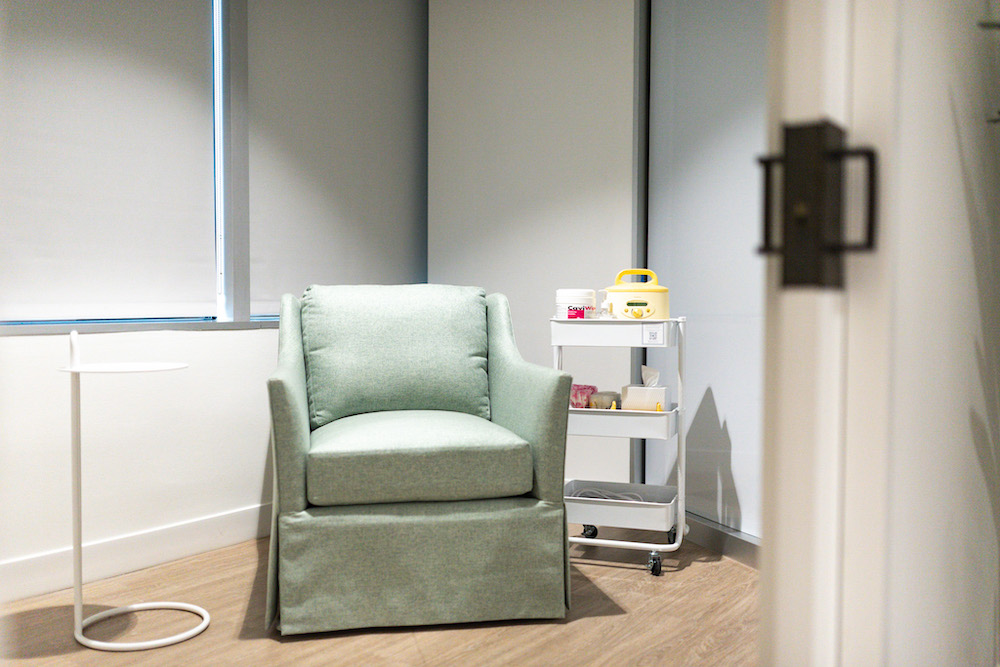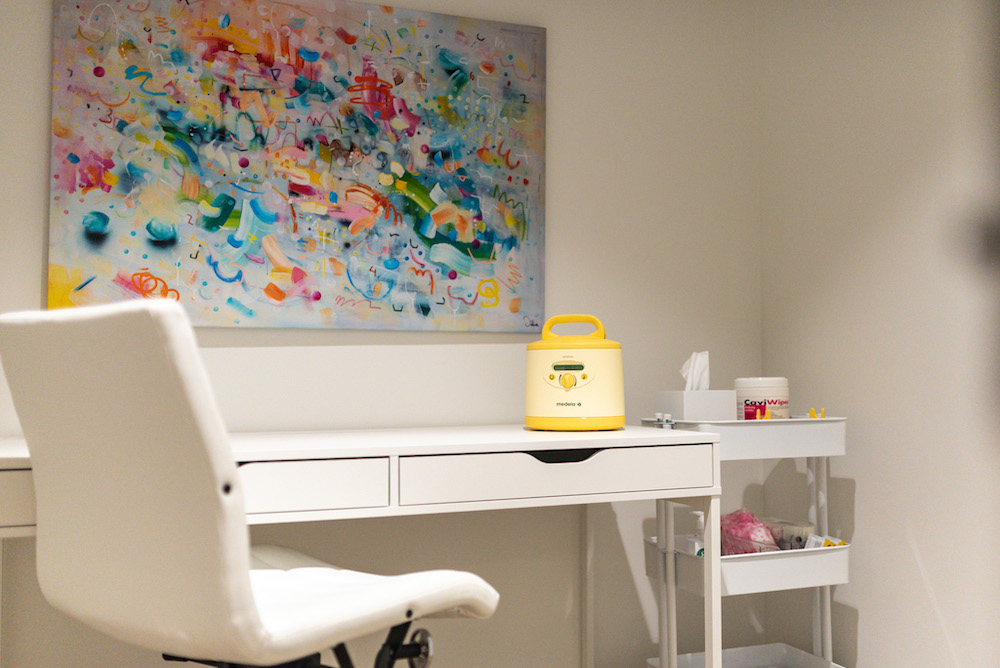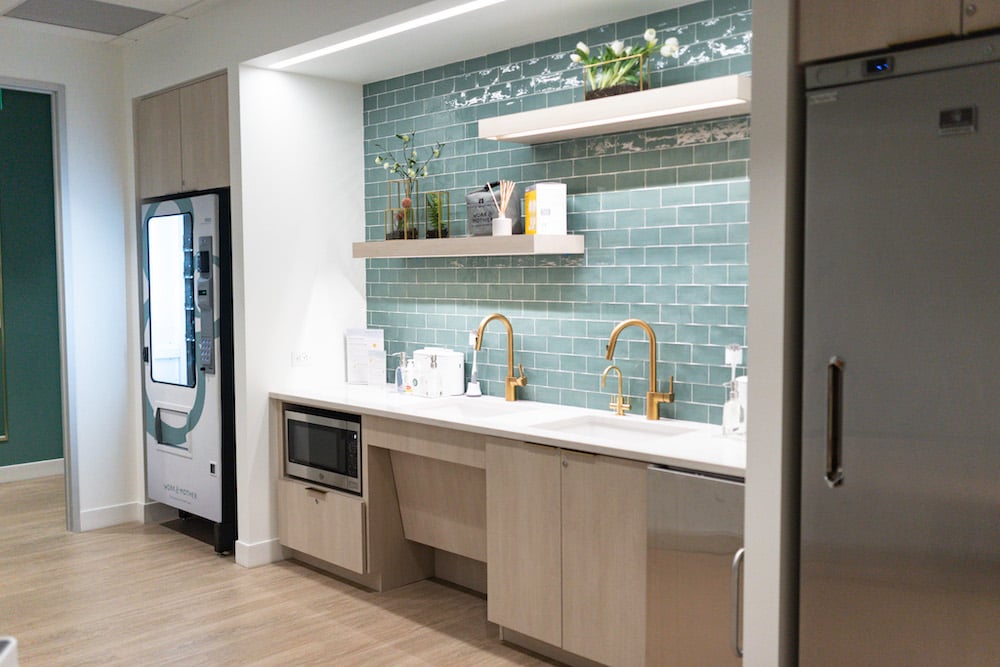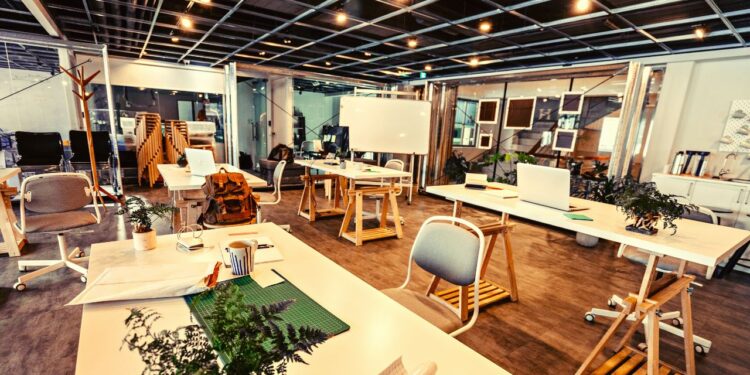- Workplace culture is increasingly important to Millennial and Gen Z employees, who value social activities and the expression of company values through “she, we, and me” spaces that promote wellness at various scales.
- Proper mother’s rooms have a profound impact on the trajectory of women at work and move the needle on employer DEI and ESG initiatives.
- The integration of wellness into the workplace is becoming more prevalent, with companies adopting new approaches to address the mental and physical health needs of employees, thereby influencing recruitment and retention.
This article was written by Jeannie Wu of Gensler and Jules Lairson of Work & Mother for Work Design Magazine.
In today’s workplace, culture has never been more important. Millennial and Gen Z employees, an increasing majority of the workforce, are driven by social activities and culture development. These generations want employers to frame their mission in terms of values, and live them out in a concrete way. To address these demands, designers can utilize a human-centered approach to create “she, we and me” spaces that promote wellness at various scales.

Designing for New Mothers
All too often mothers’ and wellness rooms are created within underutilized spaces or are slotted in to fill voids. According to the U.S. Department of Health and Human Services, more than 80 percent of new mothers in the United States begin breastfeeding, and six in every 10 new mothers are in the workforce. However, only 10 percent of moms who work full time are still breastfeeding by the time their child is six months old. By designing lactation suites as an enhanced building offering, users are provided with accessible spaces that instill a sense of pride and self-worth.
Work & Mother is seeing success by providing an enhanced offering of private lactation suites to support nursing mothers returning to work. The company’s facilities are fully equipped with hospital-grade pumps, milk storage bags, cleaning and sanitizing supplies, and all other items necessary to make the process streamlined and comfortable. Furthermore, the suites simplify a tenant’s provisional needs to satisfy the employer’s FLSA obligation, while accommodating the newly enacted PUMP Act. This business model has positively impacted working mothers as demonstrated by 90 percent of those with access to a Work & Mother suite reporting they are still breastfeeding at the six-month mark, and 50 percent at 12 months.

Providing not only access but also enhancements to lactation suites is critical to the fundamental shift in workplace culture. Proper mother’s rooms have a profound impact on the trajectory of women at work and move the needle on employer DEI and ESG initiatives. In fact, 75 percent of mothers wish to return to work, but 43 percent of new mothers end up leaving their careers within the first year of having a baby — weakening the company and workforce talent pool. Tending to the needs of new parents as they transition back to work influences the recruitment and retention of top talent of all genders.
Addressing Employee Wellbeing
In the post-pandemic world, there has been a shift to infuse wellness and wellbeing into places of business. This is evidenced by the National Institute for Health Care Management (NIHCM) Foundation’s recent report which revealed 75 percent of employees between the ages of 18-24 reported having “at least one adverse mental or behavioral health symptom.” As a result, businesses are starting to adopt new approaches that prioritize wellness and are turning to landlords to come up with a solution. By creating tailored “she, me and we” spaces, the landscape of the built environment can be changed — directly impacting the future of work.
An example of a response to this trend is Work & Mother’s recent launch of Work & Wellbeing, a multipurpose wellness facility dedicated to holistically embracing the mind, body and soul. Suites can include a combination of private and shared flex spaces equipped with massage chairs, nap pods, or circadian lighting which can be utilized for telehealth visits, religious practices, yoga and guided-mediation sessions.

As organizations forecast spaces and places that embody the company’s brand and culture, tenants are challenged to curate the user’s journey for a mass population of individuals who are seeking to bring their “whole self” to work. If designers believe that our surroundings make an impact on how daily intentions are shaped, then the curation of walls, floors and ceilings are the elements that reinforce an organization’s values. The wellbeing suites strive to provide calm and tranquil spaces by means of comfortable settings mixed with serene, nature-inspired finishes and organic forms that facilitate healing and introspection.
Fostering Inclusion
If people are the brand ambassadors of a company’s goals, values, and mission, then the envelope of the built environment is the formwork that molds cultural engagement. All people of all backgrounds are worthy, provide value and have the right to access amenities that facilitate growth and connection, and to occupy spaces that foster a sense of belonging.
Curated experiences fold into the ecosystem that solves individuality and personal connection. Inclusive design strategies will create comfortable and flexible environments where employees feel safe and supported. Ultimately, our environments send a message that affirms values or exposes fractures. By shining a light on this issue, designers have the opportunity to educate themselves to be more considerate in future design solutions.


 Dr. Gleb Tsipursky – The Office Whisperer
Dr. Gleb Tsipursky – The Office Whisperer Nirit Cohen – WorkFutures
Nirit Cohen – WorkFutures Angela Howard – Culture Expert
Angela Howard – Culture Expert Drew Jones – Design & Innovation
Drew Jones – Design & Innovation Jonathan Price – CRE & Flex Expert
Jonathan Price – CRE & Flex Expert












